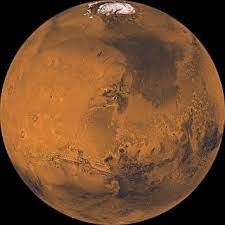
Breaking News
 Mike Rowe appears to be receiving flak for daring to explore the potential dangers of vaccines...
Mike Rowe appears to be receiving flak for daring to explore the potential dangers of vaccines...
 How to Keep Potatoes Fresh for a Year!
How to Keep Potatoes Fresh for a Year!
 A high school student has amazed the global science community with a discovery...
A high school student has amazed the global science community with a discovery...
Top Tech News
 The 6 Best LLM Tools To Run Models Locally
The 6 Best LLM Tools To Run Models Locally
 Testing My First Sodium-Ion Solar Battery
Testing My First Sodium-Ion Solar Battery
 A man once paralyzed from the waist down now stands on his own, not with machines or wires,...
A man once paralyzed from the waist down now stands on his own, not with machines or wires,...
 Review: Thumb-sized thermal camera turns your phone into a smart tool
Review: Thumb-sized thermal camera turns your phone into a smart tool
 Army To Bring Nuclear Microreactors To Its Bases By 2028
Army To Bring Nuclear Microreactors To Its Bases By 2028
 Nissan Says It's On Track For Solid-State Batteries That Double EV Range By 2028
Nissan Says It's On Track For Solid-State Batteries That Double EV Range By 2028
 Carbon based computers that run on iron
Carbon based computers that run on iron
 Russia flies strategic cruise missile propelled by a nuclear engine
Russia flies strategic cruise missile propelled by a nuclear engine
 100% Free AC & Heat from SOLAR! Airspool Mini Split AC from Santan Solar | Unboxing & Install
100% Free AC & Heat from SOLAR! Airspool Mini Split AC from Santan Solar | Unboxing & Install
 Engineers Discovered the Spectacular Secret to Making 17x Stronger Cement
Engineers Discovered the Spectacular Secret to Making 17x Stronger Cement
Harvard study says an inch of silica aerogel could make patches of Mars liveable

Now, researchers from Harvard have shown that thin layers of silica aerogel could warm the surface and block UV radiation while still letting visible light through. That could be enough to keep water liquid and let plants photosynthesize within a given region.
While Mars was once a lush, watery world that could have supported life, that's definitely not the Red Planet we know today. Modern Mars is a dried-up husk, with the only water still there locked away in either the polar ice caps or salty lakes deep underground. The thin atmosphere means that there's very little oxygen, it's extremely cold and there's no protection from UV radiation from the Sun.
The new Harvard study could solve at least a few of those problems, thanks to silica aerogel. It's one of the lightest materials ever created, transparent, and an excellent thermal insulator. All of this means that, at least in theory, a thin layer of silica aerogel in the Martian sky could effectively terraform a small patch of ground below it. This would make the surface warmer, and reflect UV radiation away without blocking visible light.

 Wall Street wants to go 24/7
Wall Street wants to go 24/7

